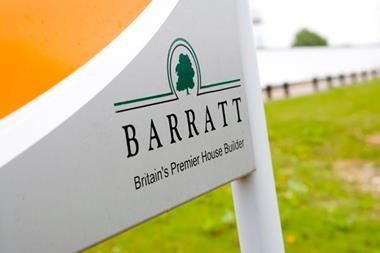The long-delayed housing white paper was intended to identify how the government will deliver its one million new homes by the 2020 target. While much has already been written about the document, only one question matters: will it succeed in that aim?

Fizzy Living and Thames Valley Housing (TVH) stand alongside the majority of the industry in welcoming the white paper’s proposals, and we will continue to support government policies that promote mixed-tenure residential development.
As a partnership with strong financial backing, we deliver all tenures, from social rented to discounted market rent and open market build-to-rent (BTR) to shared ownership and build-for-sale.
All TVH profits and surplus go towards funding more affordable housing development, delivering into the void that was left when local authorities lost their funding for council housing after the Housing Act 1980 - the point at which today’s housing crisis really started. The private rented sector stepped into the breach with no grant (but a beneficial tax regime) to deliver a wide range of property for rent.
A lack of relevant legislation gave rise to unacceptable practices and unscrupulous landlords slipped in at the lower end. The real reason was again the supply issue, forcing desperate families to accept sub-standard conditions.

With the supply of affordable housing largely the responsibility of private developers through section 106 agreements, did any politician really think that these very successful private companies would trade away the long-term financial benefit of demand outstripping supply?
It is also conveniently forgotten that when the crash came in 2008, it was only the housing associations that continued to build, bringing forward affordable stock while housebuilders retreated.
Encouraging renting
So at last the government seems to have stepped back from its total commitment to home ownership and can now see that renting maybe isn’t so bad, particularly with professional long-term landlords.
Now that policy is moving in the right direction, can the one million new homes by 2020 target be met? The white paper refers to the assumption of acceptance of higher density in town centres and the assumption that matching the height of the tallest building on a block will be approved.
It introduces a new category of “affordable private rent” of 20% or more below local market level. Local authorities are required to publish housing plans that will meet local demand, and if that demand is not met then government can step in to ‘sort it’.
London has more than 240 defined town centres with their own Tube and rail stations, shops, pubs, restaurants, clubs, cinemas, gyms, parks and leisure facilities.

Many of these town centres have one or two tall buildings, either commercial or residential or both, and most local authority planning and development teams, as well as local businesses, strongly support further higher-density town centre development. Stand in almost any tall building in London and you will see countless town centre sites eminently suitable for residential development.
Stand in almost any tall building in London and you will see countless town centre sites eminently suitable for residential development
It’s not just institutions lining up to invest in BTR. Developers and housebuilders now see the benefit of de-risking market sale schemes with an early phase going to BTR. So too do new entrants such as Tony Gallagher, who is now showing his hand.
There is a range of excellent policy initiatives in the white paper but will they be allowed to make any difference? And who will ensure that they are not derailed by Nimbyism, which wields its influence disproportionately and unfairly?
The situation is acute and change is vital. Significant investment is available and innovative construction techniques could fast-track delivery of much-needed homes across all sectors. Government now needs to make it happen.






























No comments yet